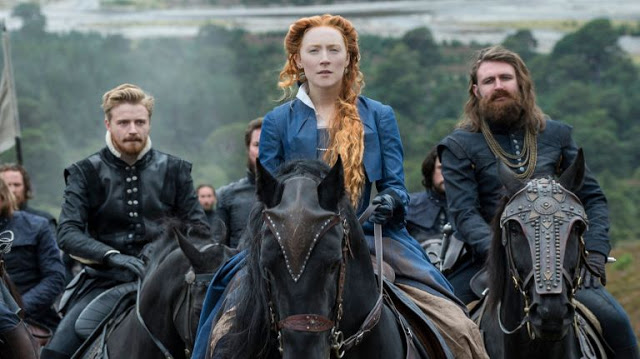Sure, Brexit is bonkers, but should we have expected anything else from England? As the movies of 2018 seem intent on reminding us, this is a nation with a thoroughly absurd history, a vast empire that routinely suffered internecine conflict and insurrection. After The Favourite showed us the ludicrous extravagances of Stuart England, now comes Mary Queen of Scots to take on the Tudors, when Catholics and Protestants were mortal enemies and Henry VIII cycled through queens like a hedge fund manager on Tinder. Of course, Henry died not long after Mary Stuart was born, but as this engrossing and enjoyable film relays, his spirit of monarchial chaos raged on.
As a prestige picture, Mary Queen of Scots is fairly rote, chronicling a frenzied period of British history with surface appeal—the elaborate gowns, the tittering ladies-in-waiting, the magnificent hair—but with minimal complexity or insight. There are a few desultory battle scenes, but director Josie Rourke, a theater veteran making her feature debut, exhibits little interest in articulating the details of military tactics. That’s fine, though, because despite its pretenses toward Importance, Mary Queen of Scots is really a small and punchy film about feminine impotence. It recognizes the sheer lunacy of the monarchy—the obsession over heirs, the crisscrossing lines of succession and competing claims to the throne, the bartering over marriage as though it were a fantasy football trade—but it does so with a human slant, considering the ignominy of two smart women who are constantly told what to do by feeble, selfish men. And while its period trappings and methodical pace may lull you into a sense of complacency, it brandishes quite a few sharp objects: knives that plunge into backs and stomachs, axes awaiting a hangman’s command, Saoirse Ronan’s eyes.
Ronan, of course, plays Mary, while Margot Robbie plays her cousin, Elizabeth I; naturally, the film’s marketing campaign posits it as a duel between feuding queens. But while Rourke does touch on the cousins’ disparate circumstances—often by way of rhyming images, as when she cuts briskly from the dilapidated halls of Mary’s Scottish castle to the gleaming corridors of Elizabeth’s English one—as the title suggests, Elizabeth is a supporting player here. And Robbie, slathered in sickly white makeup and crowned with an array of unflattering wigs, wisely doesn’t attempt to challenge Cate Blanchett’s definitive portrayal of the Virgin Queen, instead playing Elizabeth as frail, empathetic, and almost resignedly dominant. In so doing, Robbie cedes the spotlight to Ronan, whose Mary bristles with intelligence and desire, both political and sexual. The movie unfortunately keeps its two titans apart for most of its running time, but that distance pays dividends in a rather extraordinary scene near the end, when they find themselves separated by just a handful of billowing curtains that might as well signify an ocean. Mary’s reign may have been short-lived, and Mary Queen of Scots is unlikely to carve out a large space in the annals of historical cinema. But in essaying a woman so fierce and fragile, Ronan briefly makes this long-dead conflict come thrillingly to life.
Jeremy Beck is the editor-in-chief of MovieManifesto. He watches more movies and television than he probably should.

